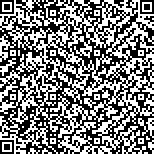| 摘要: |
| [目的]文章分析湖北省宜养水体资源禀赋、探究水产养殖业地理分布格局,旨在为该省水产养殖产业区划布局提供参考依据。[方法]利用高新遥感技术准确解读水产养殖水体资源分布状况; 基于水产统计年鉴数据,综合利用空间自相关和多元统计分析方法,研究湖北水产养殖特征及其地理分布格局。[结果](1)湖北具水产养殖功能的水体资源面积合计814万hm2,其中大水面和养殖池塘为主要养殖水体类型,两者所占养殖水体总面积的比重分别为515%和419%; (2)湖北水产养殖业表现出了显著的正向空间自相关性,其空间分布呈现非随机的地理集聚格局,武汉、仙桃和鄂州等市所辖的长江沿岸县域单元是该省水产养殖业的集聚区; (3)湖北水产养殖类型存有明显的空间异质性,襄阳、十堰、恩施、随州等西部地市以水库和精养池养殖为主,其余地市则以精养池养殖占据主导地位。[结论]在“湖泊拆围、水库限养”政策背景下,湖北省水产养殖业面临的资源环境刚性约束日益凸显,优化产业布局、探寻集约化发展模式是实现该省水产养殖业可持续发展的必循之路。 |
| 关键词: 水体资源水产养殖分布格局地理集聚空间异质性 |
| DOI: |
| 分类号: |
| 基金项目:农业农村资源监测统计经费项目“养殖主产区养殖水体资源高分遥感监测”(2130111) |
|
| THE SPATIAL DISTRIBUTION PATTERN OF WATER RESOURCES AND INDUSTRIES FOR AQUACULTURE IN HUBEI PROVINCE |
|
Zhang Hui, Jiang Yazhou, Liu Zunlei, Zhang Hanye, Cheng Jiahua
|
|
East China Sea Fisheries Research Institute, Chinese Academy of Fisheries Sciences, Shanghai 200090, China
|
| Abstract: |
| This study explored the endowment of suitable water resources, and investigated the spatial distribution pattern of aquaculture industry in Hubei province, so as to provide suggestions for the optimization of aquaculture industry layout in Hubei province. Satellite remote sensing technology was used in the present study to investigate the accurate distribution of aquaculture water resources. Comprehensive use of spatial autocorrelation and multivariate statistical analysis methods, the geographic distribution and specific characteristics of aquaculture industry in the Hubei province were evaluated based on the data from fishery statistical yearbook. The results illustrated that the potentially suitable area of water resources for aquaculture were totally 81.4×104hm2 in Hubei province. Among them, large water volumes and culture ponds were the main types of the potentially suitable aquaculture water, and the proportion of those two types in the total area of potentially suitable aquaculture water was 51.5% and 41.9%, respectively. The geographic distribution of aquaculture industry showed a significantly positive autocorrelation in Hubei province, which indicated non random geographic aggregations and significant spatial heterogeneity. In particular, counties in the cities along the Yangtze River such as Wuhan, Xiantao and Ezhou cities were the convergent area of aquaculture industry in Hubei province. There was obvious spatial heterogeneity in the composition of aquaculture types in Hubei province. The spatial heterogeneity showed that the reservoir and pond aquaculture were the main aquaculture types in the cities locating in the western regions of Hubei province such as Xiangyang, Shiyan, Enshi and Suizhou cities, while the pond aquaculture dominated in the other geographic regions of Hubei province. The aquaculture development policy proposes the demolition of illegal aquaculture in lakes and restriction of aquaculture quantity in reservoir. Under such political background, there is increasingly prominence of hard constraints in the resources and environment for aquaculture development in Hubei province. The essential solutions for sustainable development of aquiculture are to optimize the industrial layout and find out the intensive development model in Hubei province. |
| Key words: water resources aquaculture distribution pattern geographic agglomeration spatial heterogeneity |

